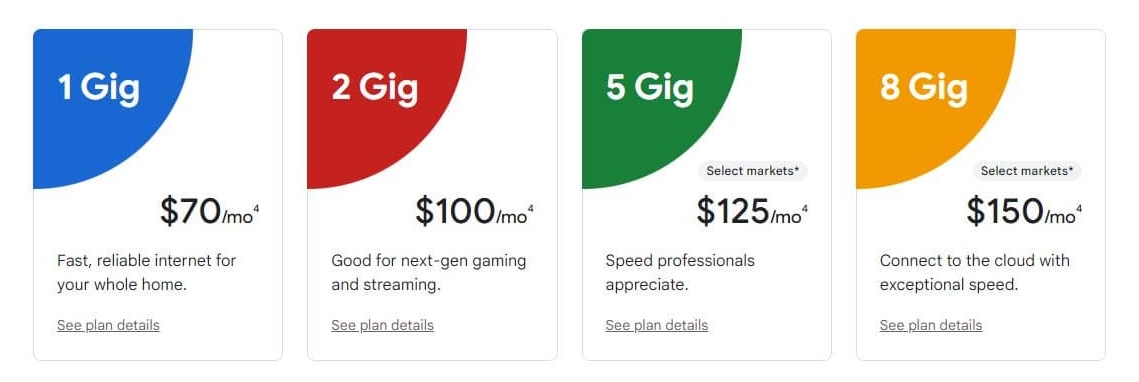
We’ve updated the user interface for a more intuitive experience that clearly reflects our commitment to simplicity and reliability. We've also introduced several new features, such as:

greater visibility into home network performance, smarter device management, enhanced troubleshooting, and chat, content and video call support for customers
The app's redesign was shaped by customer feedback from user research and usability studies, which focused on making it easier, more intuitive, and delightful to use.
Redesigned for a smarter experience
We gave the GFiber App a fresh look and feel — one that better reflects our brand and makes everyday tasks simpler. Based on customer feedback, we added new features like video support, enhanced troubleshooting, and more visibility into network performance.
- Streamlined navigation: A cleaner layout makes it easy to find what you need.
- Smarter tools: Run speed tests, manage devices, and get help with just a few taps.
- Helpful insights: Diagnostic tools and support options are more intuitive and actionable.
Bringing key features front and center
The redesigned app also makes it easier to find and access some of the most impactful features introduced over the past year. These tools not only improve internet performance but also provide greater transparency and control.
From sign-up to service

The GFiber App acts as a companion for a smooth setup experience right from day one. For in-home installs, technicians can help set up the app to optimize network performance. For customers who self-install, the app provides step-by-step guidance through every stage of the process — making setup simple and reliable, no matter how they get online.
Technician Tracker
Once the technician is en route, customers can see the location and ETA, making service appointments more predictable.
Network Health

Customers using supported GFiber routers can now access the Network Health feature, which provides a real-time assessment of speed, coverage, and overall performance. They’ll also get actionable recommendations for optimizing their connection.
TechSee

Live video support gives customers the option to allow our customer support agents see connection issues in real-time and provide troubleshooting help without an in-person visit.
Speed Test
The app now provides more details about your connection, distinguishing between:
- Speed to your home (wired test): Measures the speed from the GFiber network to your router (available on select devices).
- Speed to your device (wireless test): Measures the speed from your router to your phone.
Device Management
 For customers with a GFiber Wi-Fi 6E router — included with all new GFiber lifestyle products (Core, Home, and Edge) — the GFiber App provides a clear view of network activity and options to personalize settings, giving them greater control over how they use their internet.
For customers with a GFiber Wi-Fi 6E router — included with all new GFiber lifestyle products (Core, Home, and Edge) — the GFiber App provides a clear view of network activity and options to personalize settings, giving them greater control over how they use their internet.
- See what’s connected: Check which devices are using your internet and view their Wi-Fi signal strength in real-time.
- Custom naming and grouping: Devices can be organized easily by what’s important to you (like kids’ devices or type of device).
- Pause schedules and access controls: Internet access can be scheduled or paused for individual devices or groups of devices as needed.
- Stronger security: Unknown devices can be easily blocked.
Posted by Sanjay Chatterjee, Head of Digital
.jpg)
.png)














.png)

.jpg)

.jpeg)

.jpg)

.jpg)
